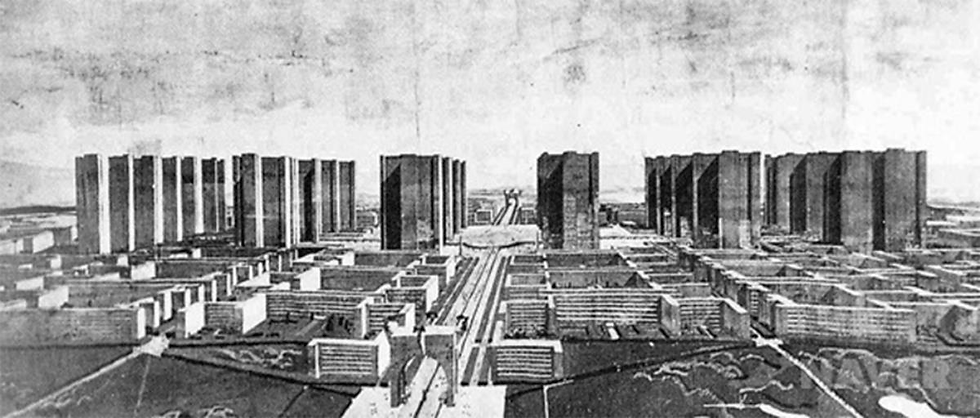A brief overview of 'Utopias' in Architecture
- Zoeanna Upadhyay

- Jun 19, 2021
- 2 min read
Zoeanna Upadhyay.
All utopian visions stemmed from the basic premise of solving some specific and prevalent problem in society. It makes sense, then, that most of them developed during times of great upheaval or change. During the renaissance, for example, a huge shift in religious consciousness and the rebirth of rational thought inspired thinkers like Da Vinci to re-imagine cities in which rationality, cleanliness and health were priorities.
The Industrial Revolution caused a huge influx in urban population- making cities overcrowded, unhygienic places to live. Howard’s idea of a garden city was a response to these conditions in society; where he imagined ‘slumless and smokeless’ cities that were self-sufficient and surrounded by greenery- something lacking in urban settlements at the time. The World Wars created death, disease, starvation and poverty. Architects and designers started thinking of ways in which they could rebuild the structure of society and change the consciousness of the people. Each idea for a utopia emerged as architects imagined a better world, free from the habits of the past.
When futurism gained momentum in Italy, for example, its primary objective was to annihilate the past and build cities that were rational, modern and functional. A city was seen as an ‘enormous machine’, without any ornamentation or anything ‘useless’(Conrads, 1970). This is similar to Le Corbusier’s idea of a Radiant city, with tower blocks, elevated highways and each zone dedicated to a specific function. Fast Forward to the 1950s, when Frank Lloyd Wright was developing his ideas for Broadacre, the essence of which was based on individuality and democracy. His city would provide the space, freedom and beauty necessary for the growth of the individual(FLW Foundation, 2017). The development of the plug-in city during the '60s provided an alternate answer to urbanism, building on the idea of flexibility and adaptability. Anything that became obsolete could be replaced and customized.
In many ways, these proposals may be seen as failures-they may have been too far-fetched and impractical to be fully realized, but they played an important role in influencing modern architecture. Howard’s garden cities inspired modern suburbs, Futurist elements can be seen in railway stations in Melbourne and Sydney, and Corbusier’s ‘tower blocks’ evolved into modern high rise apartments.

References
1. Marcello, F., 2020, 'Fantasy 1,2,3,4', Learning Material on Canvas, Swinburne University of Technology, 9th of May 2021
2. Evers, B., Thoenes, C. (2003), Architectural theory : from the Renaissance to the present : 89 essays on 117 treatises (pp.670-672,682-685), Koln: Taschen.
3. Conrads, U., (1970), Programs and manifestoes on 20th-century architecture (1st English language ed). MIT Press, Cambridge, Massachusetts,
4. Frank Lloyd Wright Foundation, (September 8, 2017), Revisiting Frank Lloyd Wright’s Vision for “Broadacre City”, The Whirling Arrow, Retrieved from-https://franklloydwright.org/






Comments